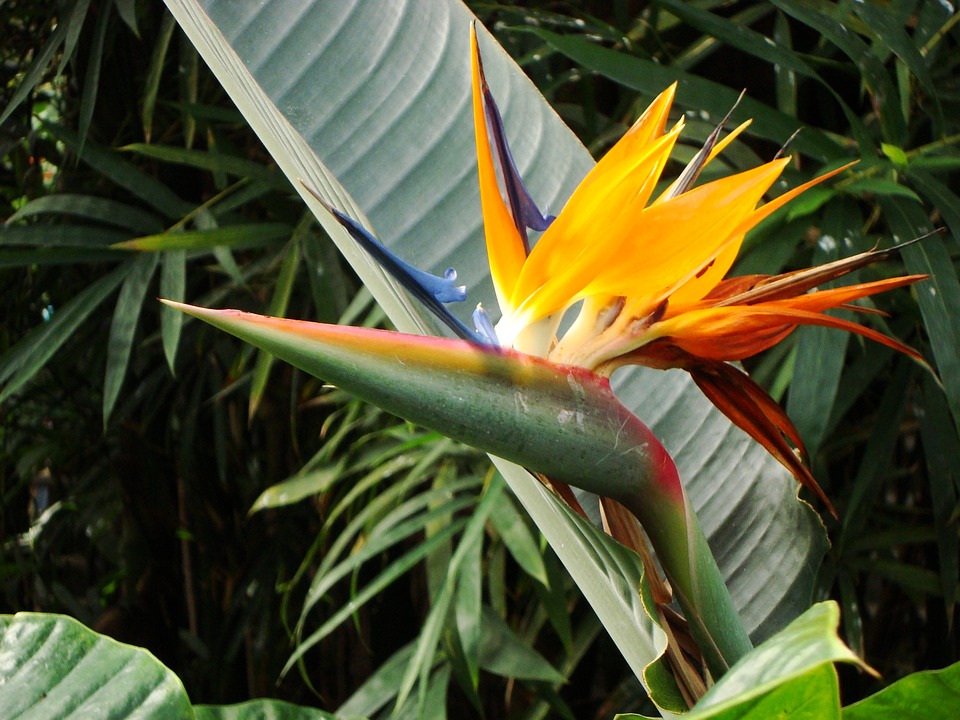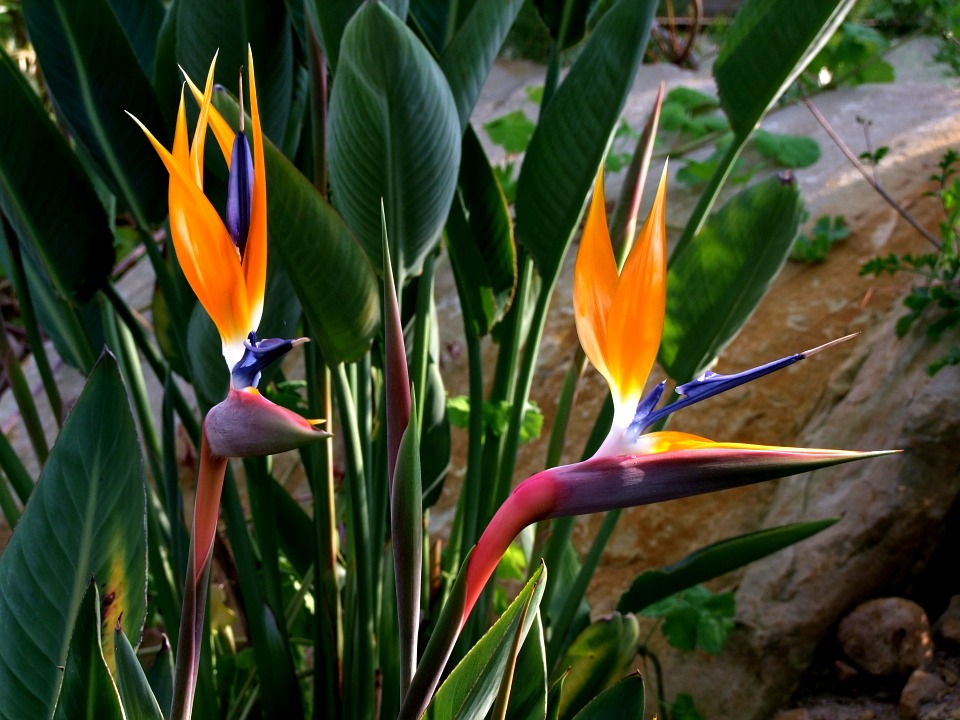Bird of Paradise (Plant): Growing and Caring For The Strelitzia Nicolai Flower
Ever wished to own an indoor plant so smooth, glossy, and features ceaseless-green leaves throughout the year? The Bird of Paradise is one such plant with stunning attributes you’d hardly find in other houseplants. It’s a tropical plant that botanically goes by Strelitzia Nicolai.
Even though this scientific name isn’t common to most gardening hobbyists, it has long-existed for over 3 decades and is so often labeled the ” White Bird of Paradise” plant.
About The Bird of Paradise Plant
What’s not to like about the Bird of paradise? Native to the tropical parts of South Africa, this tall beauty features large glossy leaves that resemble those of the banana plant.
It suits any indoor space and doesn’t need a fussy maintenance routine to age gracefully. If you give it the proper care it deserves and couple it with the handy hacks we’ll share in this guide, the bird of paradise can averagely grow up to 6 feet tall—regardless of whether you’re looking to place it indoors or under partial shade in the garden.
But if you expose it to the most pleasing conditions, this South African tropical can reach up to 20′ feet tall. The leaves burst wide and give your home an appealing tone when growing under suitable conditions—which we’ll figuratively discuss in this care guide.
Most homeowners in states such as Florida or California use this plant to landscape the outdoor space since it has the immense potential to grow wildly tall and sprout a few flowers—12′ inches thereabout—soon as it clocks 3 or 4 years old.
But the catch is you mightn’t see any flowers if you grow it indoors.
More Fun Facts
The bird of paradise is kind of like a proud princess from a royal family—it doesn’t shy from showing off its mind-blowing leaves.
Any moment you get a chance to you skim through the food section in our blog, you won’t miss bumping into a few guides on Indian cuisine recipes where most restaurants selling these dishes if perhaps you didn’t know, are served with the banana-shaped leaves from plants in the same genus as the Bird of Paradise—instead of using plates.
If you get into your nearest gardening store, you’d definitely get glued on the impulse to purchase the tropical herbaceous plant. Read on to find out how to make your bird of paradise keep on producing orange-ish flowers every summer and spring.
How to Care for The Bird of Paradise Flower
Light & Temperature
Tropical regions are warm and have temperature levels between 20-30°C. And since the bird of paradise natively traces its roots to this kind of growing condition, you’d expect it to yield much faster under bright sunlight.
Another overwhelmingly-impressive fact about this tropical goddess is it’s robust thrill to adapt to different spectrums of light exposure, hence why it’s popular among many households in apartments where the daylight could get capped, depending on the direction where the windows are facing.
For optimal foliage yield, you want to place it somewhere with ample light penetration, say close to a large window that’s facing east so it gets the most out of bright light in the morning. But if the surrounding temperature is too high, that would ruin its evergreen foliage, so it’s best to place it somewhere with filtered light.
The leaves also tend to turn yellow when the light exposure isn’t sufficient, hence you’d need to strike a balance—to protect the whole plant from withering.
Soil & Water
Most tropical plants glow when the soil drains water much faster. The soil needs to be nutrient-rich and have a permeable texture but it also needs to retain some bits of moisture for a couple of days.
Birds of paradise do well when you have a frequent watering schedule in check. And since they sprout a few flowers during summer and spring, this would be the most suitable time to keep the soil moist. But when it’s winter, regular watering sessions will cause the roots to rot since the extremely cold weather wouldn’t let the hormones have a blissful nutrient absorption process.
To protect the leaves from waning and deteriorating the plant’s glaring-green aesthetic, it’s highly crucial to go slow on the number of times you water your plant when the cold season kicks in. Chances are you probably aren’t in the loop with the fact that salty water could gravely harm the plant’s foliage and the stem’s capacity to remain sturdy throughout the year.
Another pointer to keep tabs with is—even though you need to water your plant from spring till the end of fall, try not to leave the soil too soggy. While this houseplant could still survive fairly well with your household’s humidity level, you can use a mist spray bottle during the dry months in winter, but be careful not to overdo it.
Routine Grooming & Maintenance
Nurturing a houseplant that has been in the gardening enthusiasts’ radar since the ’70s isn’t quite much of a hassle. Considering its longevity and the insane vogue it rode on back in the days, the White Bird is still one of the most in-demand tropical houseplants that’s best suitable for an apartment setting, since it comes with nearly zero maintenance routine.
The much you’d need to do apart from inspecting if the soil has dried up—or whether the light exposure is at the modest level, is plucking off the dead leaves.
In order to make your Bird of Paradise grow rapidly without any snags, you might want to stick on using purified water if the leaves begin to turn brown. If you see such a dreadful sign on your Bird of Paradise, this simply suggests that it’s allergic to salty water.
If you’re using tap water on your plants, leave it unsealed for about 12 hours so that the fluoride and chlorine properties it could highly likely hold, can vaporize with no trouble.
Fertilizer
The two most fitting seasons to use fertilizer on your birds of paradise are spring and summer. Make sure to purchase an all-purpose fertilizer that’s soluble and has low phosphorous compounds. Ideally, tropical plants react impressively to fertilizers with iron and magnesium. These two minerals spike up the growth enzymes that allow your plant to have healthy and lush foliage.
Avoid using fertilizer during fall and winter. Accelerating the development of your plant’s green pigment chlorophyll during these two seasons would cause the edges of the leaves to burn.
Toxicity Levels
The “White Bird” isn’t an intensely toxic plant. Getting into physical contact with the sap of the plant would just cause mild irritation on your skin. Although the toxin levels on this plant are significantly low, it could still cause a few adverse effects on kids or pets when ingested.
How to Propagate Your Strelitzia Nicolai
Propagating your bird of paradise isn’t hard to crack. If your first bird of paradise grows splendidly throughout the year, you might want to plant a few more—to give your landscape an overly- impressive facelift. And the most yielding method to go about it is through division.
But you first need to wait until the first or second week of spring comes along, since this is when the peak potential of the growth and rooting hormones strikes.
To get started, look out for any week or broken stalks and make a cutting from there. While propagating your houseplants, make sure to use a sharp and sterilized knife, to keep your plant from getting infected with bad bacteria or recurring strains of diseases that tend to hit most tropical plants.Soak the freshly-cut edge of the rhizome in a sizeable portion of powdered root stimulating hormone.
Make sure the cutting has no leaves before starting this exercise. A rooting hormone helps the stem cutting develop firm roots more efficiently than it normally would. Try to cut a rhizome with a few root extensions from the mother plant so it can have a rapid mutation experience in the new growing medium. Use a rich potting mix to prepare the growing medium and place each division in a small pot that fits appropriately.
Don’t get enticed to water your newly propagated bird of paradise as soon as you’ve planted it in its growing medium. Give the cuttings a few days to heal before watering them.
Propagating the Bird of Paradise Using Seeds
You can also choose to grow it using seeds. Growing this tropical plant using seed needs no effort at all, but you’ll need to be a little patient to begin seeing some solid results. To get the best possible results, use newer and dry seeds, so you need to plant them soon after harvesting. You can speed up the germination process by soaking the seeds in water for about 3-4 days. They also need to be under room temperature.
To quicken the reproduction process, break the seed’s outer shell, or even much better, jump straight to the pre-germination technique. The latter method lets the seeds sprout way before they’re planted in a growing medium.
All you need to do is tweak the surrounding temperature and humidity levels. Fold the seeds with a moist cotton cloth, keep them somewhere warm. Some gardening retailers sell seeds that are already pre-germinated, but you’d need to cough a few extra bucks to purchase such kind.
Once the seeds begin to break the coat, plant them in rich potting soil—about 1 inch deep, then let the soil retain some bits of moisture for a little while. Using seeds takes quite long, say, one month to nearly a year before tangible results begin to form up.
Common Problems You Might Deal with
Like other tropical plants, the bird of paradise is prone to a few diseases and pest attacks. This plant often struggles with scale insects, mealybugs, and spider mite attacks, but all these pests are quite easy to spot and deal with.
If your houseplant is suffering from such pest attacks, use neem oil, commercial fungicide, or soapy water to wipe the leaves and stalks. Any black spots or gray molds on the stems and leaves indicates that your bird of paradise is highly likely struggling with a fungal infection.
It’s, however, quite normal for the leaves to split, and that happens to allow wind to pass.

